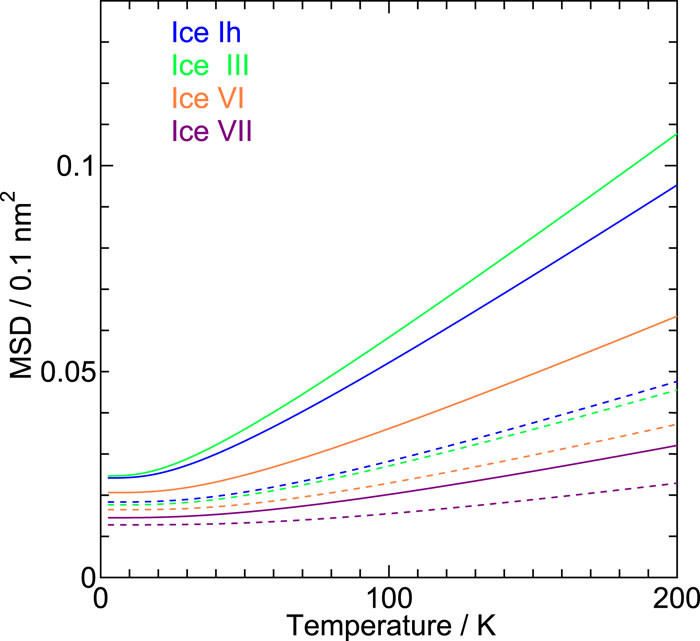On the role of intermolecular vibrational motions for ice polymorphs II:\ Atomic vibrational amplitudes and localization of phonons in ordered and disordered ices

We investigate the vibrational amplitudes and the degree of the phonon localization in 19 ice forms, both crystalline and amorphous, by a quasi-harmonic approximation with a reliable classical intermolecular interaction model for water. The amplitude in the low pressure ices increases with compression, while the opposite trend is observed in the medium and high pressure ices. The amplitude of the oxygen atom does not differ from that of hydrogen in low pressure ices apart from the contribution from the zero-point vibrations. This is accounted for by the coherent but opposite phase motions in the mixed translational and rotational vibrations. A decoupling of translation-dominant and rotation-dominant motions significantly reduces the vibrational amplitudes in any ice form. The amplitudes in ice III are found to be much larger than any other crystalline ice form. In order to investigate the vibrational mode characteristics, the moment ratio of the atomic displacements for individual phonon modes, called the inverse participation ratio, is calculated and the degree of the phonon localization in crystalline and amorphous ices is discussed. It is found that the phonon modes in the hydrogen-ordered ice forms are remarkably spread over the entire crystal having propagative or diffusive characteristic, while many localized modes appear at the edges of the vibrational bands, called dissipative modes, in the hydrogen-disordered counterparts. The degree of localization is little pronounced in low density amorphous and high density amorphous due to disordering of oxygen atoms.
Hideki Tanaka, Takuma Yagasaki, and Masakazu Matsumoto, On the role of intermolecular vibrational motions for ice polymorphs II: Atomic vibrational amplitudes and localization of phonons in ordered and disordered ices, J. Chem. Phys. 152, 074501 (2020). https://doi.org/10.1063/1.5139697
